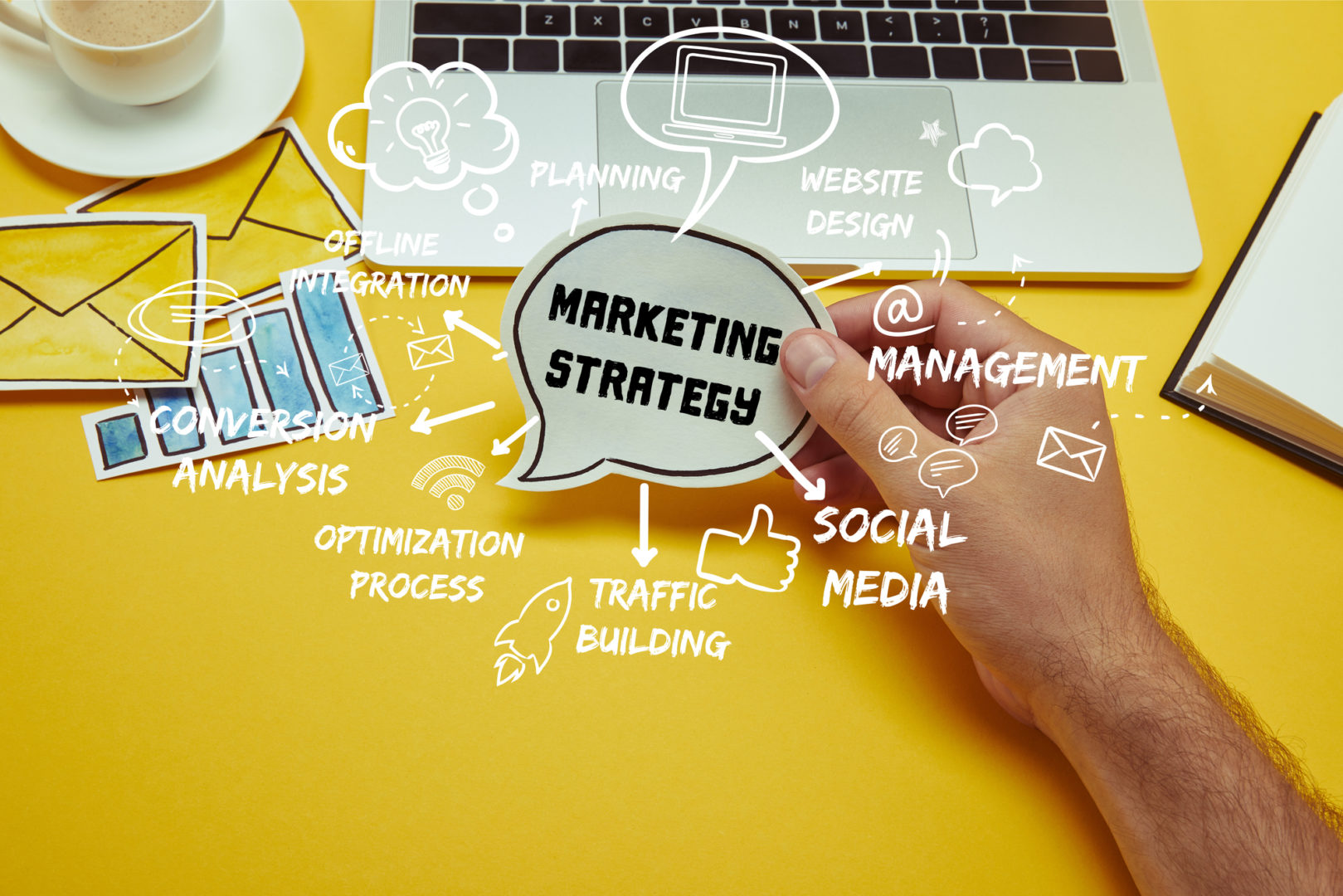
Marketing 4.0 and new consumer trends » Portal Insights
Follow Us @
Marketing 4.0 and new consumer trends » Portal Insights
-Trending Marketing news, content marketing, latest Ways to rank your website, marketing discoveries, Local SEO, seo and social media marketing services. enjoy your stay on our website.
Marketing 4.0 is Philip Kotler's newest theoretical analysis of the relationships between companies and consumers. Understanding what it means and how you can adapt to new trends is essential to ensure the development of your brand.
In the first decades of the 20th century, when the second industrial revolution was beginning to show its effects on society, large industries had their first contact with something that remains today: market competition. With production growing, it was necessary, for the first time, to compete for commercial space.
From the need to overcome the competition, marketing as we know it emerged, which to this day evolves according to social and marketing changes. Today, in the digital age, we are going through a new period of adaptation.
It is clear that the relationship between market and public is not what it used to be, showing much more horizontal. The characteristics of this scenario were studied by academic Philip Kotler, who then developed the concept called marketing 4.0.
In this article, we will talk more about its definitions and draw a timeline with the stages prior to the current one. Afterwards, we will explain how your company can apply strategies to keep up with new consumer trends. Check out!
What is marketing 4.0?
Marketing 4.0 represents, according to the author’s words, the arrival of the digital revolution for companies. This definition says a lot about the characteristics of the current marketing scenario, especially with regard to the media channels used to connect with the public.
Previously, the main form of advertising was done by purchasing space in newspapers, TVs and magazines. Today, with the expansion and democratization of the internet, Digital Marketing efforts are much more efficient in reaching a larger, more qualified audience at a relatively lower price.
However, analyzing only the technological changes that occurred to make this period possible would be too shallow. To understand the concept, it is necessary to understand how this advancement in technology changed the way customers view their relationships with brands. To do this, think about social media.
The great connectivity made possible by networks has brought major changes in social aspects. Today, instead of valuing exclusivity, people promote inclusion and sense of community. Furthermore, with the virtual elimination of entry barriers, competition for Internet users' preference was enhanced.
This last aspect has the effect of horizontalization of the relationship between the public and the company. With diverse information at their fingertips, consumers are no longer influenced by advertising advertisements as they were before. Instead, he gives more value to feedback given by acquaintances or digital influencers.
Therefore, the challenge for companies in this new era is greater than developing quality products and services. They need, above all, to know how to involve a more critical public, with less time available and affected by numerous forms of stimulus at the same time.
What are the other stages of marketing?
At the beginning of the article, we mentioned that marketing went through evolutions until it reached the current scenario. Philip Kotler, author of the marketing 4.0 concept, also dedicated his studies to identifying the characteristic elements of the previous stages.
Understanding how the process developed over time is important to notice how the characteristics of each era are linked to the others, and how it is necessary to be attentive to adapt to the slightest changes in scenery. So let's go back in time and understand the details of each phase.
Marketing 1.0
We have already said that the competition generated by the industrial revolution influenced the emergence of marketing. The boom in this process occurred in the first half of the 20th century, marked by the great world wars, which intensified disputes between large global industries.
At the time, characterized by mass production, commercial activities were completely focused on the product, leaving aside any consideration of the consumer. Companies simply they produced, advertised the product’s functions and sold it.
Factors such as differentiation and personalization were still unknown. However, with the growth of local competition, the model proved to be outdated, giving way to marketing 2.0.
Marketing 2.0
During this period, which focuses on the consumer and not the product, companies began to look for alternatives to differentiate themselves from others. Thus, marketing efforts were aimed at creating a true identity for the brand, developing visual aspects, slogans and product variety.
With more purchasing options, customers adopted a more demanding stance. It was from there that a concept emerged that remains relevant to this day: the segmentation. By segmenting consumers, brands now have greater ease in developing messages with a positive impact.
This period is marked by large TV commercials that, using narrative techniques and language appropriate to the public, managed to create a connection between brand and audience.
Marketing 3.0
As time went by, consumer demand continued to rise. By noticing himself as the highest piece of the market pyramid, and not as a mere target, he realized that it exerts power over companies. Therefore, the public begins to demand that brands act in a more humanized way.
This was the period that consolidated the idea of every enterprise having clear missions, visions and values. With greater ease of finding information and more business options, consumers began to dictate market trends according to their own ideals.
A clear and recent example is the change that the TV commercial format has undergone. Previously, the approach was focused on pure entertainment to engage the viewer, which created space for sketches that were often considered sexist.
Upon noticing that this type of behavior is no longer accepted by the audience, breweries changed the content of their advertisements. The pieces published today are much more thoughtful and inclusive, demonstrating the brand's commitment to social values.
How to adapt your company to new consumer trends?
Now that you understand what marketing 4.0 is and what transformations made it possible to reach this stage, let's talk about some practices that should be used to adapt your company to the new market characteristics.
Continue reading!
Carry out digital transformation
As defined by Philip Kotler, marketing 4.0 represents the digital revolution for companies. That said, it is important that your company completes the digital transformation process. Contrary to what many think, it is not enough to create accounts on social networks and invest in Digital Marketing.
More is needed. The proposed changes are made at a structural level. In other words, all company processes must be thought of within the digital context of modern society.
This means a step well beyond document scanning. Technology should no longer be seen as something superficial and auxiliary, but rather as a central piece of the enterprise's strategy.
Invest in Influencer Marketing
As we talked about when conceptualizing marketing 4.0, today's consumers are much more likely to believe someone's opinion about a company than the company's advertising efforts. Like this, It is important to have satisfied customers who can act as brand advocates.
How is this possible? In addition to offering qualified products and services, it is necessary to value the overall customer experience. If, at the end of the transaction, he feels valued and considers that the decision to do business with the company was rewarding, his feedback can bring new opportunities.
A more direct way to achieve this influence is through partnerships with digital influencers. These individuals have a highly segmented audience that places great value on their recommendations.
Finding an influencer who works within your market niche can then expand your reach.
Work on a Content Marketing strategy
To overcome the need for large advertising investment and enhance Digital Marketing efforts, more and more companies are adopting a Content Marketing strategy. Unlike the traditional model, this approach seeks to attract the public to you, enabling them to become leads.
The interesting thing about this strategy in the context of marketing 4.0 is that it allows the digital revolution to reach its full potential. Through marketing automation tools, it is possible to optimize contact with consumers and measure the efficiency of the approach.
Furthermore, all communication with your target audience is facilitated by creating a persona, a semi-fictional character that represents the ideal customer. By understanding your values, pains and motivations, you create content that directly impacts you, creating a relationship of greater trust.
Relying on consumer credit is essential, especially in an era where the credibility of advertising efforts is reduced.
This trust, in fact, can be increased by establishing authority for your brand. Using techniques of IF THEyou can ensure that your website appears among the main search engine results in a completely organic way, which is well regarded by the 4.0 consumer.
Understanding the meaning of marketing 4.0 allows you to adjust your company's operations to ensure greater commercial efficiency. In the current scenario, characterized by competition and the horizontalization of relationships between brands and customers, only those who are aligned with the public's demands are successful.
So, did you understand how marketing 4.0 is directly linked to the technological advances of recent decades? Want to know more about this universe? In this article, we explain what digital transformation is and its impacts on society. Check out!
Content produced by Rock Content.
Marketing 4.0 and new consumer trends » Portal Insights
Follow TODAYSGIST on Google News and receive alerts for the main trending SEO news, Ai news, latest Ways to rank your website, marketing discoveries, Local SEO and lots more!
Marketing 4.0 and new consumer trends » Portal Insights
SHARE POST AND EARN REWARDS:
Did you like this post?!!! Join our Audience reward campaign and make money reading articles, shares, likes and comment >> Join reward Program
FIRST TIME REACTIONS:
Marketing 4.0 and new consumer trends » Portal Insights
Be the first to leave us a comment, down the comment section. click allow to follow this topic and get firsthand daily updates.
JOIN US ON OUR SOCIAL MEDIA: << FACEBOOK >> | << WHATSAPP >> | << TELEGRAM >> | << TWITTER >
Marketing 4.0 and new consumer trends » Portal Insights
#Marketing #consumer #trends #Portal #Insights
-
Cryptocurrency3 months ago
NFT Sales Touch IDR 4.3 Trillion in the Second Week of February 2024
-
Sports3 months ago
Making history at the 2023 Asian Cup, the Indonesian national team raises its position in the FIFA rankings
-
Sports2 months ago
Falling from Bilbao, Girona's position is threatened in the Spanish League
-
Sports2 months ago
PSG Will Try to Sign Frenkie De Jong from Barcelona
-
usa today entertainment3 months ago
Adu Outfit Park Min Young Becomes an Office Worker, from Drakor What's Wrong with Secretary Kim to Marry My Husband
-
Sports3 months ago
And Ashworth Urges Manchester United to Seize an Important Figure at Chelsea
-
Trend tech & Telecoms3 months ago
28 Terrorist Group Accounts Get Paid Blue Check on X
-
Sports3 months ago
Lukaku Calls Draw Away Good Results

























